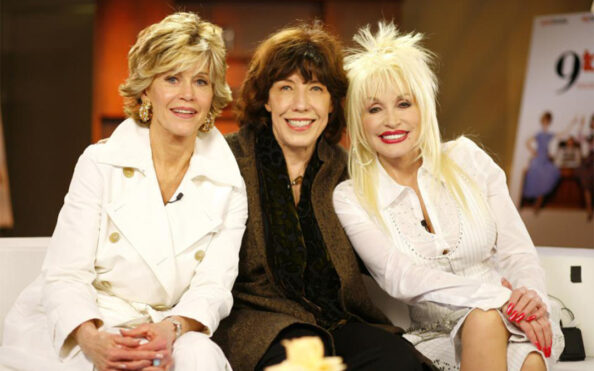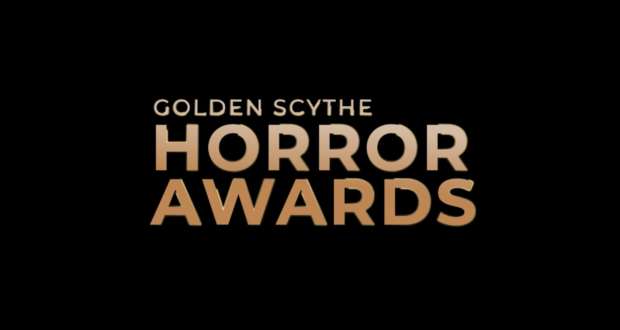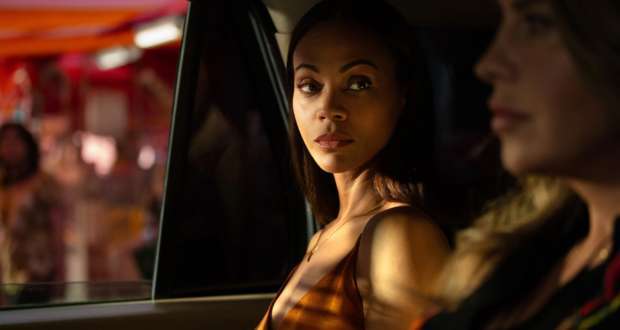Still Working 9 to 5 at the Nashville Film Festival
Back in 1981, Dolly Parton’s theme song snagged an Oscar nomination for the film 9 to 5. (Her song lost to the theme from “Fame”).
Some 42 years later the documentary Still Working 9 to 5 by Camille Hardman and Gary Lee is playing at the 53rd Nashville Film Festival. It is a documentary that heralds and memorializes the struggles of working women for “raises, rights, and respect.” Women have, historically, been valued less than their male counterparts in the workforce, and that realization caused star, Jane Fonda, in partnership with Gary Lane, to try to make a film that would be informative on the subject.
In 1970, one in every three women in the work force was engaged in clerical work, generally as a secretary. There were 20 million such office workers in the 1970s and they were routinely subjected to sexual harassment, poorer wages than their male co-workers and many other inequities. Not only were the women’s good ideas co-opted by male superiors (and then presented as the men;s own) but the women were often not promoted when they were as qualified (or more qualified) than the male worker (whom they had often trained) who got the promotion. One line from the film that particularly resonated with me, by way of explanation for this obviously unfair labor practice: “Well, he does have a family to support.”
My own father (born in 1902) refused to financially support me In my desire to go to law school because there was a perception that there were “women’s jobs” and “men’s work. One male interviewee on the street articulated it this way In the documentary: “They (women) should do feminine work.” “Female” jobs that were acceptable for me when I came out of college in that decade were secretary, teacher, or nurse. If you had any other aspiration, the charge was that you were taking away a job that a man, as the head of the household, deserved more. (How times have changed!)

Jane Fonda, Lily Tomlin, and Dolly Parton (l to r).
It was attitudes like these that were foisted on the American female workforce and which caused one worker, Lilly Ledbetter, to ultimately sue, when she learned that she was one of four managers doing exactly the same job as her three male co-workers, but they were being paid $6,000 a month while she was being paid only $3,000 a month. Women, in general, made only 60 cents on the dollar in the late 70s and the gender pay gap In the U.S. meant that we ranked #51 on a list of the world’s most equitable workforces. A white woman worker at the time the film was released (1980) would only make 79 cents on the dollar in comparison with a male worker, while a Latino female worker fell even further behind, making only 54 cents on the dollar when compared to a man.

“Still Working 9 to 5”
When Lilly Ledbetter sued, in Alabama, the resulting bill, the Lilly Ledbetter Fair Pay Restitution Act was the first bill that Barack Obama signed as President in 2009. The characters in the original “9 to 5” needed their jobs. They were not simply working to supplement their spouse’s incomes. They were career women before society allowed women to have lucrative careers. Only 6 out of every 100 of the clerical staff, if female, ever advanced to management in the 70s.
As nearly the only girl in my group of 10 high school female friends with a working Mom, I lived through this era. It was “okay” for a woman to be a nurse, a secretary, or a teacher, but my father expressed the same sentiments that the men on the street shown in this documentary articulate. That is, it’s okay for a woman to have a job to supplement her husband’s income, or as a hobby, but “real work” was for men.
This double standard caught the attention of Jane Fonda, well-known (and often vilified) for embracing important cultural issues and trying to make a difference. Some called “9 to 5” a “militant feminist cry.” Others termed it “a breakout cultural moment.” As a busy rebel and pusher of causes, Fonda knew she wanted Lily Tomlin in on the cast, and Dolly Parton entered, Fonda said, when she heard Dolly singing on the radio and it occurred to her that Parton could probably act as well as sing. One female screenwriter had held out for a cast that focused on 5 women in the office, but that number was cut to 3.
Fonda also realized that “a spoonful of sugar helps the medicine go down.” She and Gary Lane recognized that comedy rather than drama was the way to go to get their message across. Colin Higgins—writer of such hits as “The Best Little Whorehouse in Texas,” “Harold and Maude,” “Foul Play” and “Silver Streak” —was brought in to write and direct.
The studio wanted a movie star, not a television actor. Dabney Coleman (now 90) was known for television appearances on shows such as “The Love Boat,” “Mary Hartman, Mary Hartman,” and “The Mary Tyler Moore Show.” Therefore, the studio preferred that either Steve Martin or Richard Dreyfuss play the part of Frank Hart, the sexist, egotistical, lying, hypocritical bigot (think Trump on steroids).
The film went on to become the second highest-grossing film of the year, second only to “The Empire Strikes Back,” taking in $100, 409, 707 at the box office. This documentary—which reunites Jane Fonda, Lily Tomlin, Dolly Parton, Dabney Coleman, and other commenters, like Rita Moreno— is shot against the backdrop of the turbulent years of the ERA (Equal Rights Amendment) movement, with Phyllis Schlafly’s Eagle Forum mobilizing opposition to give women equal rights under the Constitution. (The ERA bill missed the deadline for passage and so never became law.) The Clarence Thomas Supreme Court hearings are also revisited.
When asked if they intended to light the fire of feminine revolt against injustice back in 1980 with the movie “9 to 6” Fonda said, “Secretaries are lighting the fire; we’re just fanning the flame.” As one protest sign said, “Women are pissed off about being pissed on.”
When the Broadway version of “9 to 5” came to Broadway in 2009 and again in 2019 it was quite interesting to see Harvey Weinstein (THE Harvey Weinstein), an investor in the film, say, “This play could run forever simply on the attitude of employees toward their boss. I know that everyone in my company wants to kill me.”
It was a great film back in 1980 and it’s a great documentary for the U.S., then and now.























